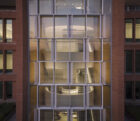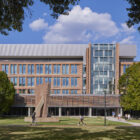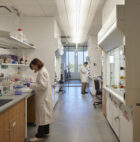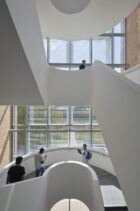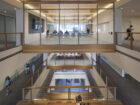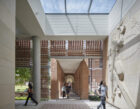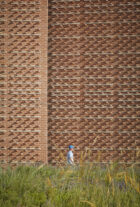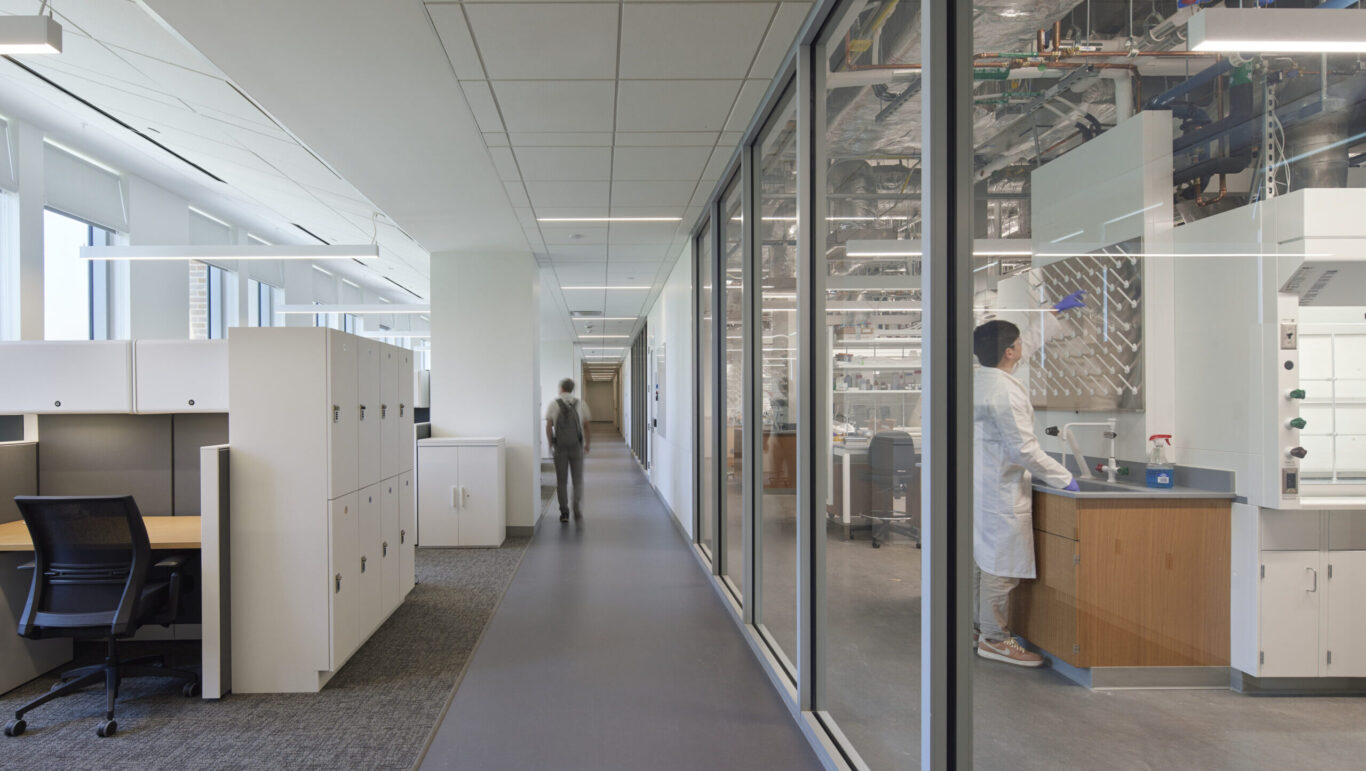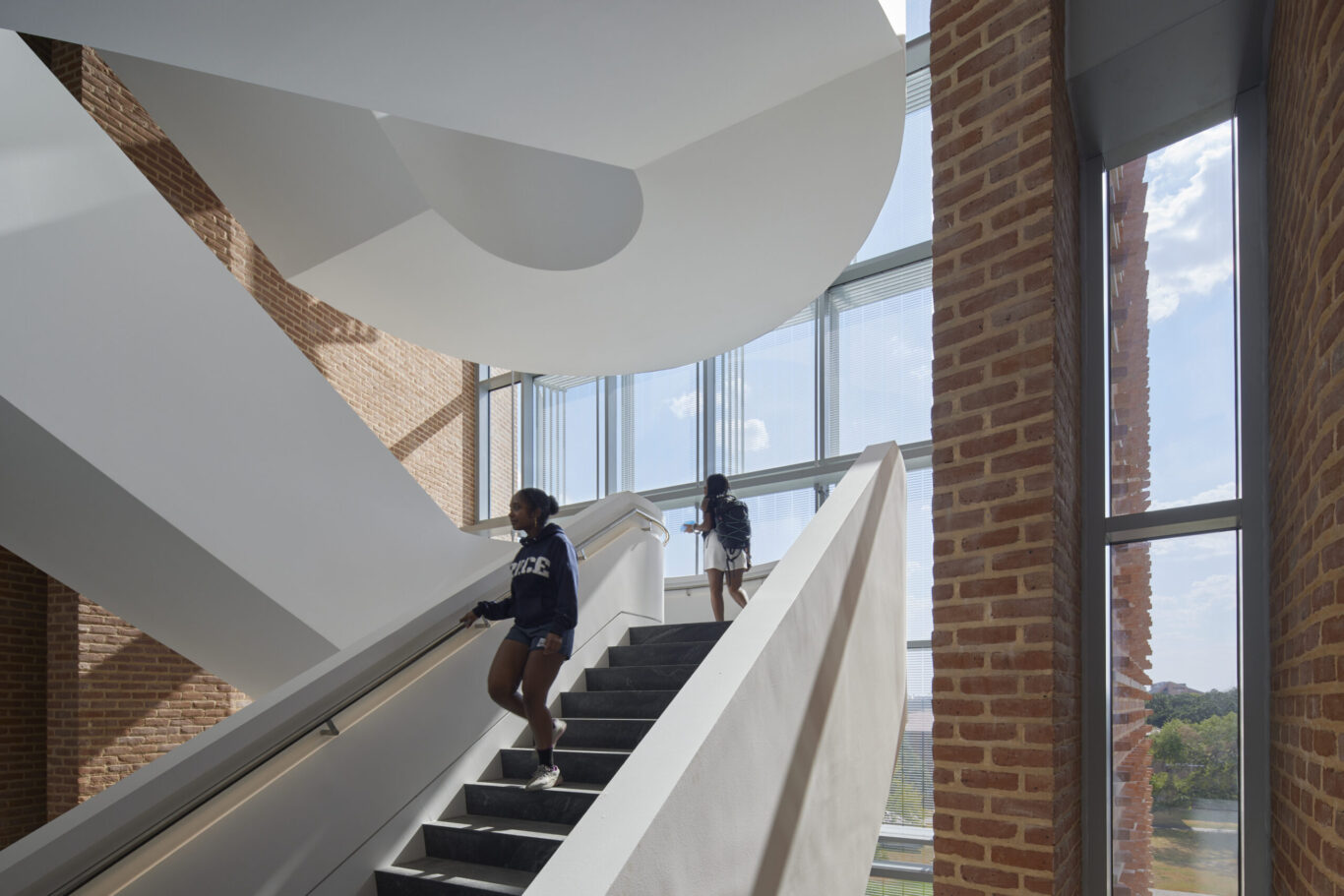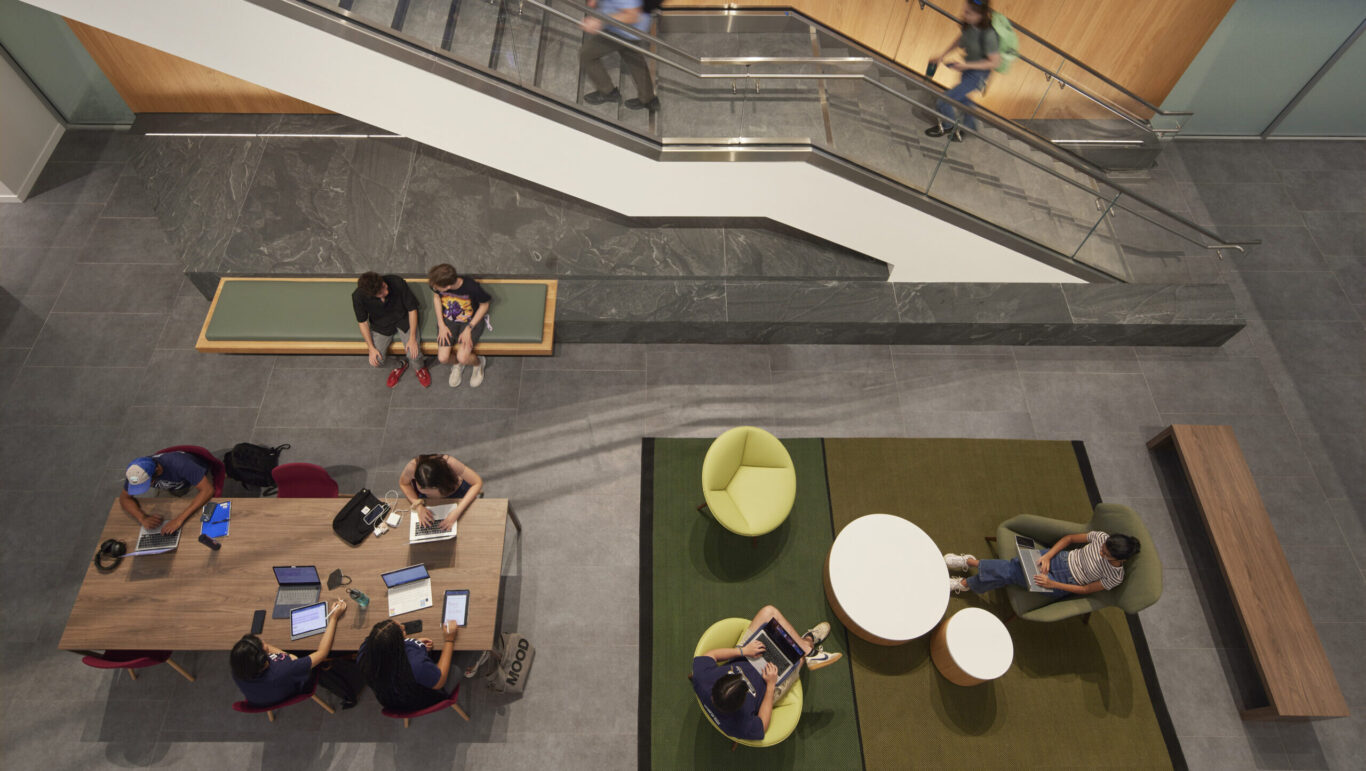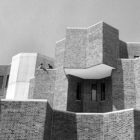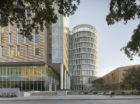History meets high-performance
At 250,000 square feet, the new Ralph S. O’Connor Building for Engineering and Science is the largest research facility in Rice University’s historic core campus. Located on the site of the former Abercrombie Engineering Lab, the O’Connor Building provides users with technology-rich facilities that embody the University’s goal to stay at the forefront of scientific discovery and to recruit the country’s best scientific and engineering minds. The new high-performance facility includes state-of-the-art laboratories, classrooms, offices, a cafe, and interactive gathering spaces throughout. A flexible, multi-purpose event space with an outdoor terrace sits at the top level with views of the campus and the Houston skyline.

At the building’s main entrance, a cantilevered sculptural stair is framed by a pair of brick walls and shaded glass wall facing the Engineering Quad. This stair tower establishes a readily identifiable campus landmark while complementing the adjacent tower at Maxfield Hall. A portico at ground level extends and connects to the existing network of covered pedestrian arcades.
